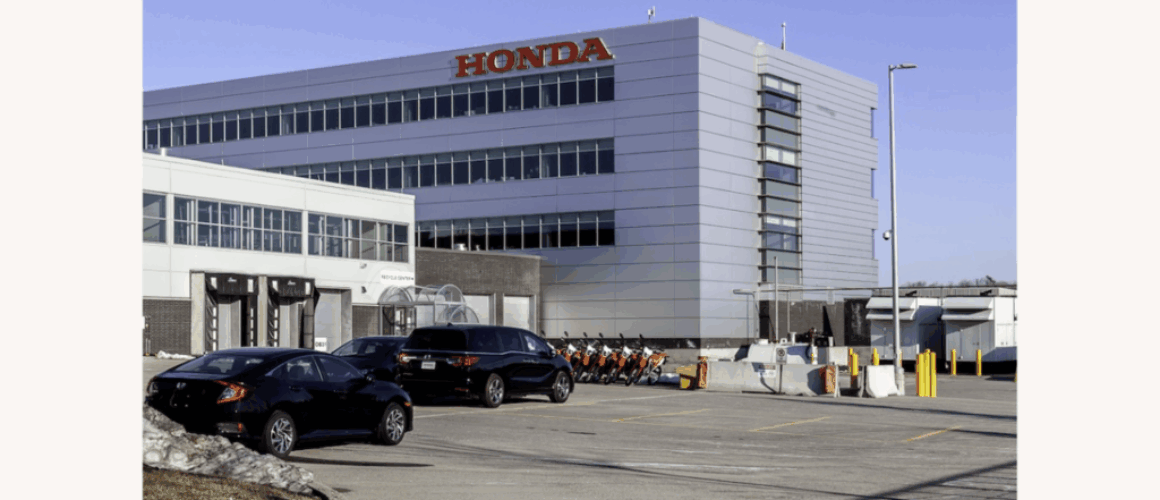The EV Pivot Pause – Why Honda’s Ontario Delay Signals a Cautionary Phase for Canada’s Green Industry

Honda’s recent decision to postpone its much-celebrated $11 billion electric vehicle (EV) plant in Ontario has sent ripples across Canada’s auto sector and raised larger questions about the trajectory of the green transition. Initially slated to break ground by late 2025 and create over 4,000 direct jobs, the facility was hailed as a cornerstone of Canada’s zero-emissions strategy and a symbol of its competitiveness in the global clean-tech race.
Now, with Honda shifting focus back to its U.S. operations and citing “market softening” and “regulatory ambiguity” in Canada, both investors and policymakers are reevaluating the strength of Canada’s green industrial policy — and whether the country is as prepared for the electric future as its press releases suggest.
Behind the Delay: A Mix of Demand, Logistics, and Policy Friction
Honda’s statement cited “changing market signals” in North America, including lower-than-expected EV adoption rates, supply chain cost spikes, and slower government infrastructure rollouts. But sources close to the matter also point to delays in regulatory clarity from Ottawa, particularly around energy subsidies, provincial-federal coordination, and workforce readiness in the Durham and Peterborough regions.
Unlike the U.S., which has rolled out massive EV incentives through the Inflation Reduction Act, Canada’s strategy has remained fragmented — with some provinces, like Quebec and B.C., offering aggressive rebates, and others like Alberta offering none.
A senior executive at a competing automaker told CanadaBrief, “The EV roadmap in Canada is aspirational, not operational. The incentives exist, but the infrastructure — from charging stations to retraining programs — is lagging. Companies are pausing, not pulling out, but it’s a red flag.”
What This Means for Ontario’s Auto Ambitions
Ontario Premier Doug Ford had made Honda’s EV facility a flagship announcement, showcasing the province’s readiness to become “the battery belt of North America.” The postponement doesn’t kill that vision, but it does inject a dose of realism.
For smaller suppliers who had begun scaling up battery enclosures, charging components, and rare earth mineral processing facilities, the delay means paused contracts, workforce layoffs, and increased financing uncertainty. This hits particularly hard in communities like Cobourg, Guelph, and Lindsay, which had expected a spillover of jobs and logistical demand.
Ontario’s Ministry of Economic Development has responded with a promise to accelerate permitting and funding mechanisms for green supply chains, but critics argue that the time to streamline was before contracts were signed — not after headlines were made.
Canada’s Position in the Global EV Race
Globally, EV momentum is still strong. China is scaling aggressively, Europe remains committed, and the U.S. has doubled down on domestic supply chains. But Canada risks becoming the quiet cousin in a noisy room — talking a big game without delivering the industrial capacity or demand-side incentives to match.
What’s more, consumer confidence in EVs has plateaued, partly due to persistent range anxiety, inconsistent charging infrastructure, and higher upfront costs. For Canada — a country with vast distances and harsh winters — these concerns are particularly acute.
To address this, Ottawa is working on a revised “EV Adoption Strategy 2.0,” which insiders say includes nationwide incentives for rural EV ownership, tax credits for Level 3 home charging installations, and mandates for federal fleet electrification by 2030.
Yet none of these are likely to satisfy industrial players without hard timelines and enforcement.
Strategic Pause or Structural Weakness?
The Honda delay could serve as a wake-up call rather than a death knell. Carney’s government, aware of the symbolic and economic damage of the postponement, is reportedly convening an emergency green industry roundtable later this month to reevaluate investment timelines and realign federal-provincial priorities.
Some experts argue that this moment is actually an opportunity. “The pause allows us to fix foundational issues,” says Dr. Renee Caldwell, a clean manufacturing consultant. “We can’t race blindly into the EV boom without fixing grid capacity, reskilling programs, and cross-border harmonization.”
Conclusion: Between Vision and Velocity
Honda’s delay is not a retreat — it’s a recalibration. But it underscores a deeper tension in Canada’s green transformation: the distance between what we aspire to lead and what we are structurally prepared to deliver.
For Canada to reclaim its momentum, it must treat green industrial strategy not as a political trophy, but as a systems challenge — requiring synchronized action, firm policy scaffolding, and honest assessments of readiness.
Until then, the EV future remains just a little further down the road.